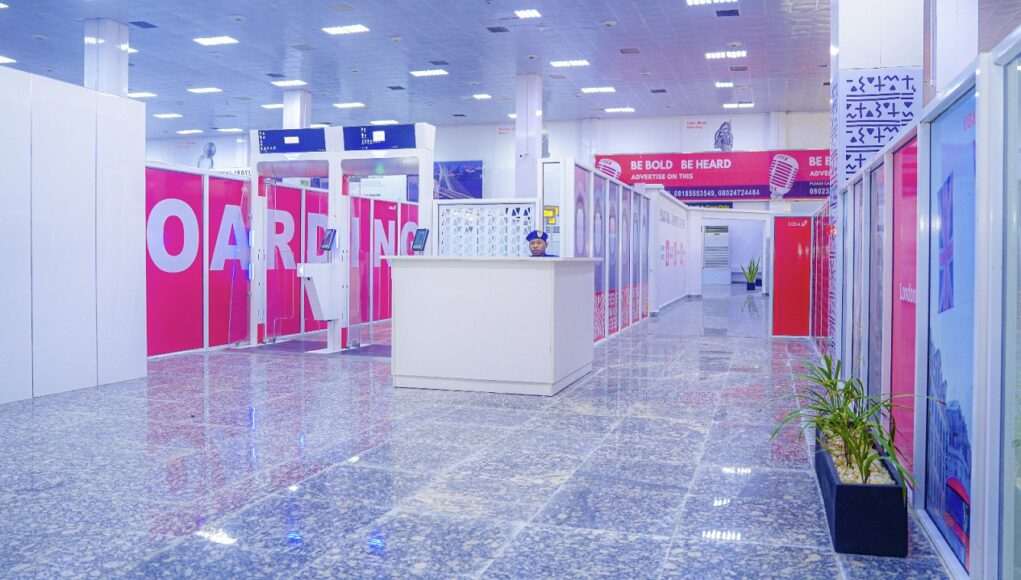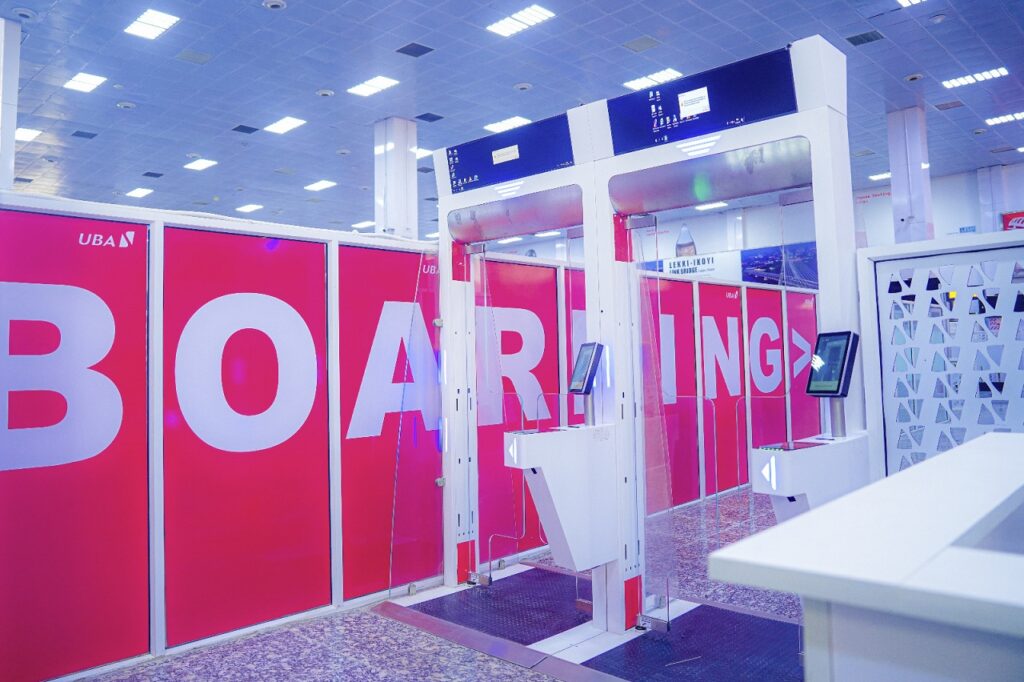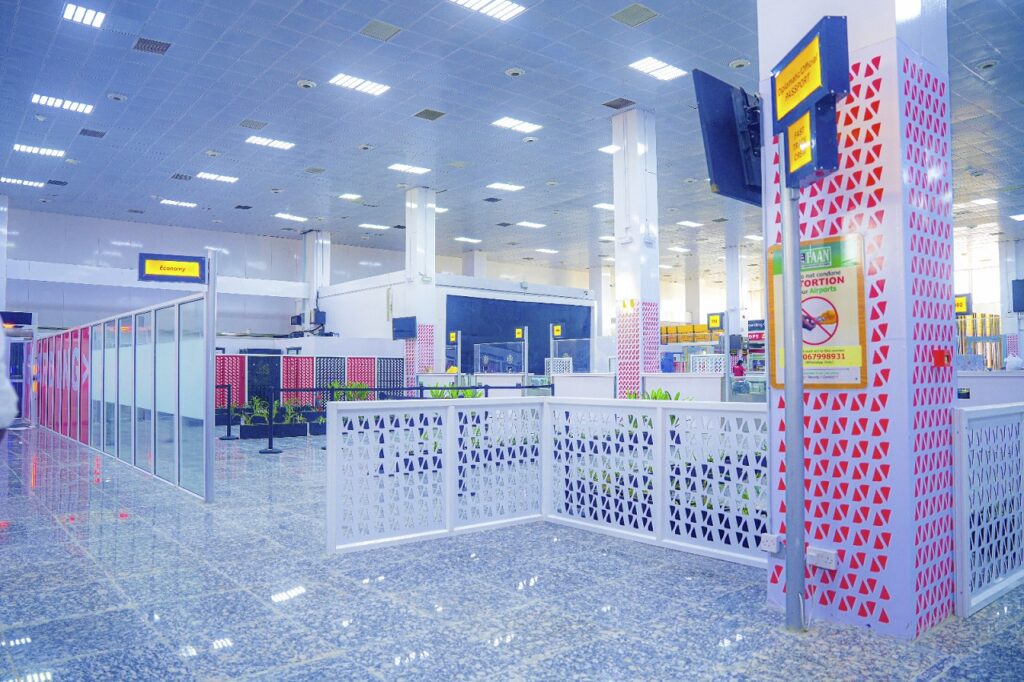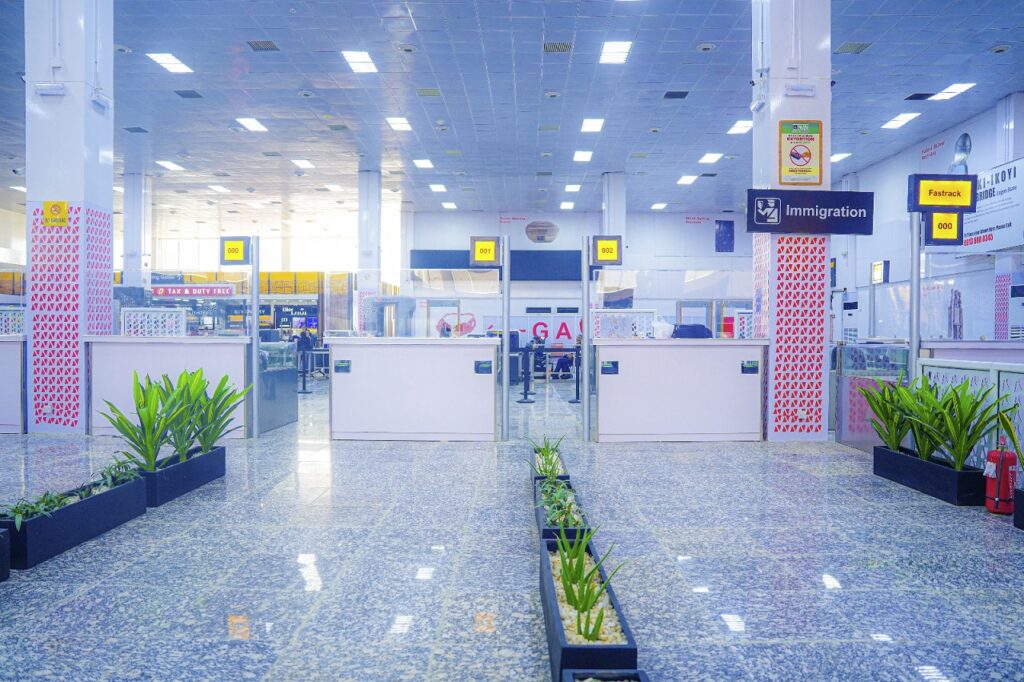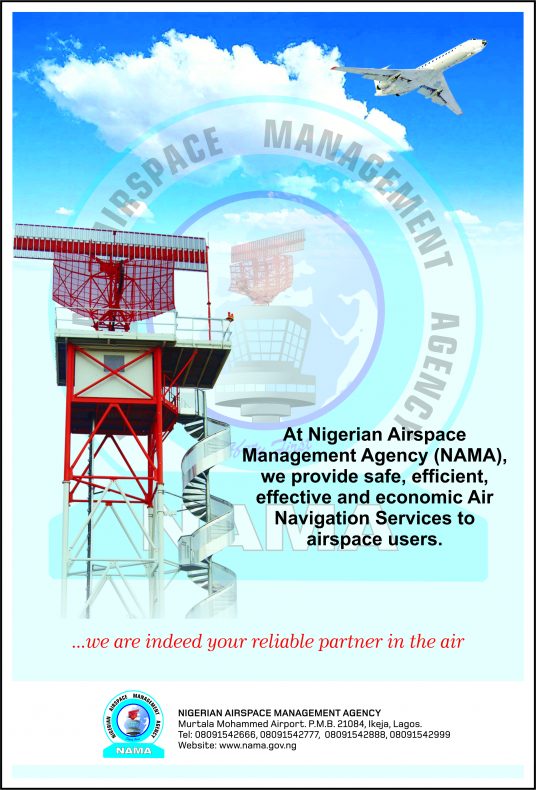BY ANTHONY OMOH
The Federal Airports Authority of Nigeria (FAAN) has completed the much-anticipated D-Wing terminal transformation at Murtala Muhammed International Airport (MMIA), Lagos. The project, which mirrors the earlier E-Wing renovation completed in December 2024, upgrades the aging D-Wing into a sleek, contactless processing hub that now meets global facilitation standards.
The E-Wing remodel, executed in collaboration with United Bank for Africa (UBA), set a high benchmark in design and operational efficiency. That same collaboration appears to have extended into the D-Wing project, continuing a fruitful public-private engagement.
Once marked by congestion and outdated infrastructure, the D-Wing now offers streamlined processing, improved aesthetics, and smart technology integration. It also connects directly with the new international terminal, allowing seamless transitions between wings.
According to FAAN, the redesign adheres to ICAO’s standard passenger flow model, which recommends that a traveler should move from terminal entry to departure gate—or from disembarkation to exit—in under 45 minutes.
“This D-Wing terminal transformation was executed under our Passenger Flow Process initiative,” explained Director, Airport Operations, Federal Airports Authority of Nigeria. “It is part of the IFU project designed to improve passenger throughput. With the new system, passengers no longer face long queues or delays. The entire experience is smoother, cleaner, and significantly faster.”
Key Features Integrated for Speed and Comfort
The remodeled terminal includes:
- Electronic gates (e-gates) for secure, fast movement.
- Smart passport readers that eliminate paper-based immigration forms.
- Automated crew screening to replace manual entries.
- High-capacity scanners that reduce reliance on physical baggage checks.
The installed E-Gate at the D-Wing of the Murtala Muhammed International Airport The ambiance around the D-Wing of the Murtala Muhammed International Airport Immigration Stalls at the newly remodelled D-Wing of the Murtala Muhammed International Airport
These improvements are part of FAAN’s strategy to introduce contactless facilitation. The result is a more hygienic, secure, and efficient passenger processing experience.
“Previously, the lines were endless and delays routine,” said a senior concessionaire operating within the terminal. “Now, average facilitation time is down to 30 minutes. That’s a major change.”
The transformation isn’t only functional—it’s also visual. Soft lighting, intuitive layouts, natural finishes, and digital signage create a calming, world-class ambiance that eases passenger stress.
“This terminal has truly evolved,” the concessionaire added. “From the architecture to the interiors, it now feels like an international-grade facility.”
Reduced Processing Times and Streamlined Screening
Before the upgrades, travelers were told to arrive two or even three hours before international departures. This was due to tedious manual processing, long screening queues, and redundant form-filling. However, the new system changes everything.
“We’ve eliminated the immigration forms,” the FAAN source noted. “Passengers now place their passport on the scanner and proceed. No writing, no hassle.”








